Crooning
Main kya janoo kya jadoo hai …1
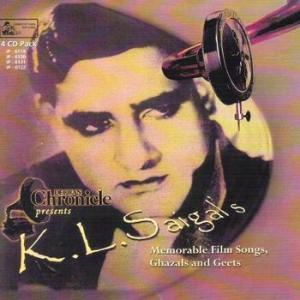 Music has been the lifeline of the past, the nourishment of the present and will surely be the demand and need of the future. Be it lullabies or occasions, delightful or distressing… music stays fresh for seconds, minutes, hours and decades. And musicians… well they are definitely eternal.
Music has been the lifeline of the past, the nourishment of the present and will surely be the demand and need of the future. Be it lullabies or occasions, delightful or distressing… music stays fresh for seconds, minutes, hours and decades. And musicians… well they are definitely eternal.
Music is a lot more than lyrics… It’s how you put it into different genres… Everyone has heard of the crooner who sings love songs which you can hum along with and to sing which you don’t have to exert your voice box anymore. All you got to do is sing into the mike. Didn’t you know, or did you, that it was the mike, that simple instrument which we all take for granted now, that in the late twenties made –crooning – and the love song – possible.. Na milta mike to barbaadi ke afsaane kahan jatey ….
K.L Saigal was our original king of crooning, and the first superstar of the Indian film industry. Born on 11 April, 1904, in Jammu, he entered cinema as a singer-actor in the year 1930. From there he took flight into a beautiful career of about 185 songs, both film and non-film, in Hindi, Urdu, Bengali, Tamil, Persia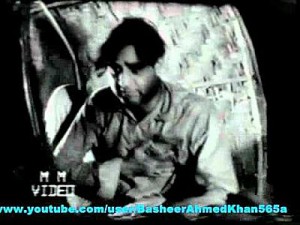 n, Pashto and Punjabi.
n, Pashto and Punjabi.
It is said that he sneaked into the house of a professional female singer in his early years and learnt singing by imitating her. He soon realized his voice had great power over people and chose singing as a career.
Kali Paanch (a peg before a song), was Saigal’s way of working. He lived, loved, ate, drank, sang and had a very musical way of responding to the infinite compliments he was showered with – he would recite the following verse (sher) ‘Kairah koi sher maar laya, ek gee hi gaya hai na chadd yaar‘ (I have killed no tiger (a play on the word ‘sher’) – just a few people).
The magical powers of music were taken for granted by Saigal’s generation. This was impressed upon Sa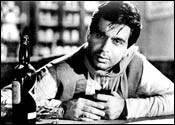 igal when he was a child and a doctor prescribed music as a therapy for his sick brother. With time, his own voice was recognized as magical. Ustad Faiyaz Khan, the master khayal vocalist told Saigal after listening to him sing a short khayal in raag darbari, ‘My dear boy, there is nothing I can teach you now that will make you a greater singer’. Also, Rabindranath Tagore made one of his few exceptions when he allowed Saigal, a non-Bengali to sing rabindra sangeet. His voice enticed all.
igal when he was a child and a doctor prescribed music as a therapy for his sick brother. With time, his own voice was recognized as magical. Ustad Faiyaz Khan, the master khayal vocalist told Saigal after listening to him sing a short khayal in raag darbari, ‘My dear boy, there is nothing I can teach you now that will make you a greater singer’. Also, Rabindranath Tagore made one of his few exceptions when he allowed Saigal, a non-Bengali to sing rabindra sangeet. His voice enticed all.
After working as a railway timekeeper and a typewriter salesman he began his film career in 1931 with Urdu films at New Theatres, Calcutta. In 1934, Saigal attained stardom with the release of Chandidas. The film had set a new trend establishing the dominance of music in Indian cinema. Soon after, in 1935, followed the stunning success of Devdas, directed by PC Barua and a work of genius.
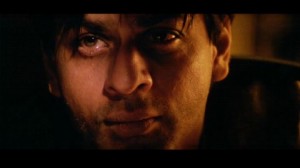 Saigal’s character in Devdas was the first of a kind. The film explores the pathos, tragedy and despair of failure. Devdas’s character is a negative one but the story is told from his point of view, the story of his inner self with an inner motivation that is neither right or wrong. The audience suspends judgement and identifies with him.. The caste, character and backgrounds of Devdas, Paro and Chandramukhi don’t count. Their social context does not count which was a huge leap for the India of that time. They are ‘individuals’ and their songs form a huge part of the way they express their ‘individuality’ and their inner truth. The songs are ‘soulful’. They express personal emotion – love, longing and the all-important and famous ‘gham‘.2
Saigal’s character in Devdas was the first of a kind. The film explores the pathos, tragedy and despair of failure. Devdas’s character is a negative one but the story is told from his point of view, the story of his inner self with an inner motivation that is neither right or wrong. The audience suspends judgement and identifies with him.. The caste, character and backgrounds of Devdas, Paro and Chandramukhi don’t count. Their social context does not count which was a huge leap for the India of that time. They are ‘individuals’ and their songs form a huge part of the way they express their ‘individuality’ and their inner truth. The songs are ‘soulful’. They express personal emotion – love, longing and the all-important and famous ‘gham‘.2
Today’s generation has lost its innocence. It is savvy, sassy, ironical and confident. It does not longingly pine for love or gaze at the beloved from afar. It goes after what it wants aggressively. And gets it. It is a self-aware generation which can think detachedly about love. And love songs. As in Delhi Belly’s Saigal Blues3. This tongue-in-cheek tribute to Saigal is hugely popular with the new generation. It parodies the emotional element of the original song and is hilarious. The concept of forbidden love does not apply to today’s younger generation, at least not in the metropolises.
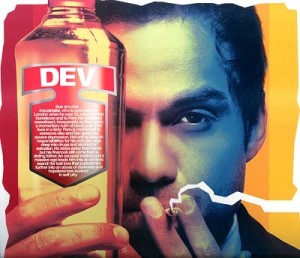 But while we may have cured ourselves of romance, wistful longing and the yearning for a beautiful inner self, the ‘gham’ tends to persist, though in today’s harsh urban context. it is of a darker more cynical kind. Like in the songs of Dev D. Saali Khushi4 and Nayan Tarse5 Their sound is hard and their sadness is hard and ragged too..
But while we may have cured ourselves of romance, wistful longing and the yearning for a beautiful inner self, the ‘gham’ tends to persist, though in today’s harsh urban context. it is of a darker more cynical kind. Like in the songs of Dev D. Saali Khushi4 and Nayan Tarse5 Their sound is hard and their sadness is hard and ragged too..
Saigal’s alcoholism took its toll on him and he died in 1947 at the very young age of 42. Today’s generation does not know him. And does not identify with him. But he’s there. Like a family heritage, a part of our history, he trickles down. Because there is no generation, however young, which will chase away the blues for good. Just go to YouTube and type in Piya bin chain nahin aavat6(Devdas 1936) or Kisko Khabar thi (Devdas, 1955)7 and you’ll see just what Devdas means to us.
2 http://www.youtube.com/watch?v=3IPKMmDrB0Q (dukh ke ab din, Saigal, Devdas, 1936)
http://www.youtube.com/watch?v=V5uJFV2Njio (mitwa mitwa, talat mehmood, Devdas, 1955)
3 http://www.youtube.com/watch?v=nER3GFyGRUc&feature=related (Saigal Blues, Delhi Belly,2011)
4 http://www.youtube.com/watch?v=CRmVgLVSyew&feature=related (saali Khushi, Dev D, 2009)
5 http://www.youtube.com/watch?v=fljo6nIjAIA&feature=related (Nayan Tarse, Dev D, 2009)
6 http://www.youtube.com/watch?v=BOq9iHp-uQQ (piya bin chain nahin aavat, Devdas,1936)
7 http://www.youtube.com/watch?v=zMxIOKaWtgk&feature=related (kisko khabar thi, Devdas,1955)









